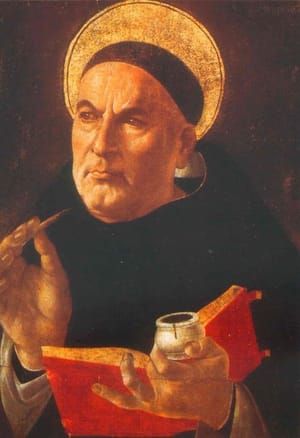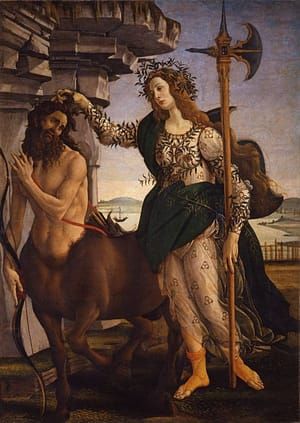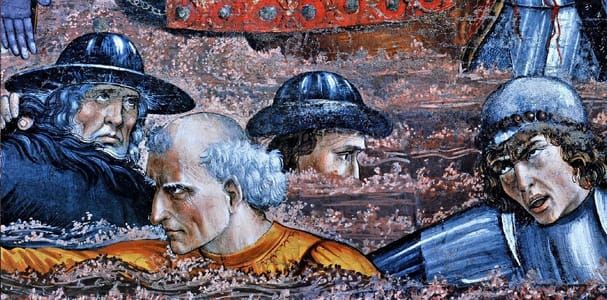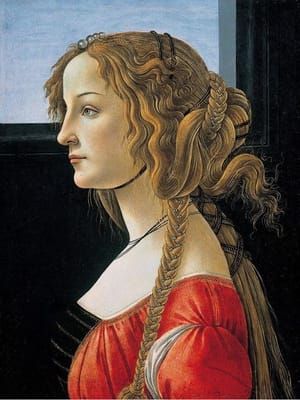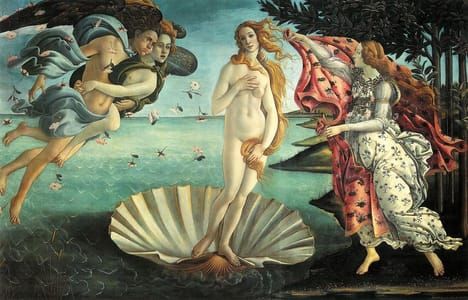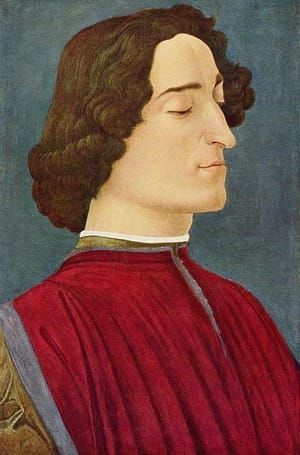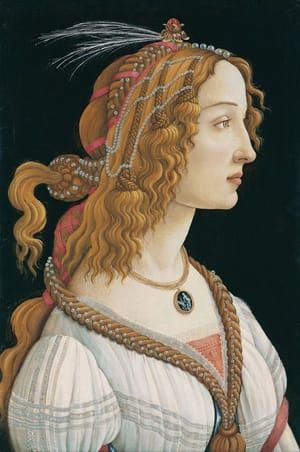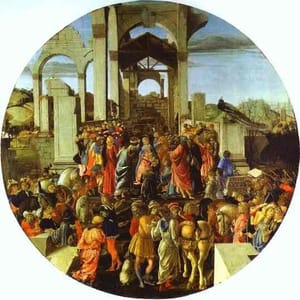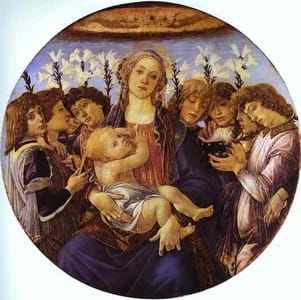

Allegorical Portrait of a Lady (Simonetta Vespucci ?)
Alessandro Botticelli
Simonetta Vespucci (ca. 1453 - 1476) was an Italian Renaissance noblewoman. She was renowned for being the greatest beauty of her age - certainly of the city of Florence. By birth she was a noble lady. At age fifteen or sixteen she married Marco Vespucci, who was a distant cousin of the Florentine explorer and cartographer Amerigo Vespucci. She died in 1476, probably from pulmonary tuberculosis. She was only twenty-two at the time of her death. The entire city was reported to mourn her death and thousands followed her coffin to its burial. Botticelli finished painting The Birth of Venus in 1485, nine years later. Some have claimed that Venus, in this painting, closely resembles Simonetta. Some suggest that Botticelli had fallen in love with her, a view supported by his request to be buried at her feet in the Church of Ognissanti - the parish church of the Vespucci - in Florence. His wish was in fact carried out when he died some 34 years later, in 1510.
...Botticelli never wed, and expressed a strong aversion to the idea of marriage. The popular view is that he suffered from an unrequited love for Simonetta Vespucci. According to popular belief, she had served as the model for The Birth of Venus and recurs throughout his paintings, despite the fact that she had died years earlier, in 1476. Botticelli asked that when he died, he be buried at her feet in the Church of Ognissanti in Florence. His wish was carried out when he died some 34 years later, in 1510. He was buried near her in the same church.
(http://www.imaginarymuseum.net/2013/06/)
Simonetta Vespucci (née Cattaneo; 1453 – 26 April 1476), nicknamed la bella Simonetta, was an Italian noblewoman from Genoa, the wife of Marco Vespucci of Florence and the cousin-in-law of Amerigo Vespucci. According to her legend, before her death at 22 she was famous as the greatest beauty of her age in North Italy, and the model for many paintings (many not showing similar features at all) by Botticelli and other Florentine painters. Many art historians are infuriated by these attributions, which the Victorian critic John Ruskin is blamed for giving some respectability.
...Botticelli finished painting The Birth of Venus around 1486, some 10 years later. Some have claimed that Venus, in this painting, closely resembles Simonetta. This claim, however, is dismissed as a "romantic myth" by Ernst Gombrich, and "romantic nonsense" by historian Felipe Fernández-Armesto:
"The vulgar assumption, for instance, that she was Botticelli's model for all his famous beauties seems to be based on no better grounds than the feeling that the most beautiful woman of the day ought to have modelled for the most sensitive painter."
(https://en.wikipedia.org/wiki/Simonetta_Vespucci)
Uploaded on Nov 12, 2017 by Suzan Hamer
Alessandro Botticelli
artistArthur
Wait what?

